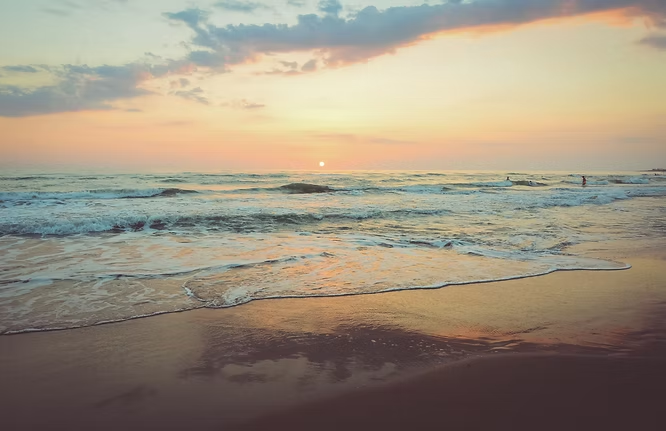Beaches as Dynamic Ecosystems
Beaches are among the most recognizable marine environments, enjoyed by millions of visitors each year. While often viewed as simple stretches of sand, they are in fact vibrant ecosystems where most of the life remains hidden beneath the surface. Even people who have never set foot on a beach are likely to recognize them from photographs or films, highlighting their cultural and ecological significance.
Formation and Types of Sand
Beaches form where waves deposit sand while currents fail to carry it away. The sand itself can have two main origins:
- Geological sand – produced from the weathering of rocks.
- Biological sand – derived from broken coral skeletons, shells, and other marine remains.
Most beaches contain a blend of both, and their slope influences what organisms can thrive there. Larger intertidal zones provide more space for life beneath the sand.
Life on and Around the Beach
Buried Marine Life
Clams, crustaceans, and worms live beneath the sand, surviving low tide thanks to water trapped between sand grains. These organisms form the foundation of the food web.
Predators and Visitors
During high tide, predators such as rays, sharks, flatfish, and croakers hunt for small fish and invertebrates. At low tide, shorebirds forage for prey in the sand. Beaches also serve as nesting grounds for sea turtles and shorebirds, while land mammals may hunt along the shore at night.
Vegetation and Dunes
Because sand is constantly shifting, vegetation struggles to establish itself. Still, coastal plants like sea oats flourish on sand dunes, while palm trees and other species grow at the boundary where sand meets soil along calmer beaches.
Protecting Beach Ecosystems
Unlike coral reefs or mangrove forests, beaches are not formed by living organisms. This makes their protection unique. Conservation often focuses on safeguarding entire areas rather than individual species, except where sea turtles or shorebirds are abundant. Since beaches are popular tourist destinations and vital for coastal economies, closures are rare. Instead, responsible tourism is key to reducing damage.
Ways to Minimize Human Impact
- Avoid littering and remove waste responsibly.
- Do not disturb or remove living organisms from the ecosystem.
- Refrain from excessive interference that disrupts the natural balance.
By respecting these principles, people can continue to enjoy beaches while ensuring their survival as thriving ecosystems for future generations.

